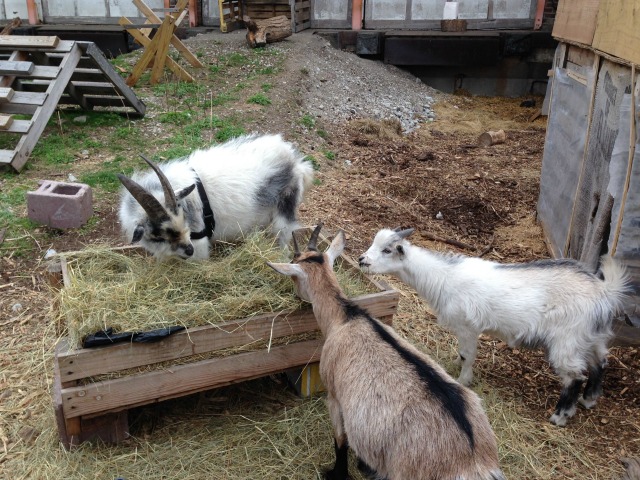Your Guide To Buying A Chicago-Area Farm Share This Spring
By Anthony Todd in Food on Apr 12, 2017 2:23PM

Growing Power./ Photo: Melissa McEwen
Spring has sprung and flowers are coming up in yards, which means it's time to buy your 2017 farm share, or CSA (Community Supported Agriculture). CSAs are a great way to get a really great deal on local produce, support local farmers and learn to cook a bit more creatively. In other words, they are pretty much a win-win-win for everyone. But you have to do a little bit of research before you buy.
Here's the basic concept, if you're not familiar: instead of shopping at a farmers market for each individual item, a customer buying a CSA pays a relatively large amount of money up front (usually several hundred dollars) in exchange for a guarantee of regular produce deliveries all summer long. The benefits to the farmer? They need capital during this early part of the season, before cash starts flowing in from market sales, and they need guaranteed customers. The benefit to the consumer? Pre-paid groceries all summer and a ton of local food at prices way better than farmers markets.
But it can be hard to find and choose a farm share! My go-to guide has more than 50 options, and that doesn't even cover every single farm in the area. What should you look out for?
Price. Each CSA is a different price, and just because you're supporting a small farmer doesn't mean you can't bargain hunt. The established CSAs are usually more expensive (Nichols Farm in Northwestern Illinois, for example, has an option that costs more than $1,000) while some start-ups can come at bargain prices because of the assumption that you're taking a bit more of a risk on their crops. Make sure to do the math on price/week, rather than just looking at the total.
Size of Share. Every CSA offers a slightly different set of options. Some farms just do one size fits all: everyone gets a big box of veggies. Others offer small, medium and large sizes, so you can choose how much food you get. CSAs only save you money if you can use up all the produce, so don't be too ambitious if it's your first time in the game.
Delivery of Products. How do you actually get your produce from the farmer? Some drop off at farmer's markets, some have alliances with businesses throughout the city, and some even offer home delivery. Tomato Mountain, a great choice for busy urban shoppers, includes individual home delivery in the price of all of its shares.
Variety. Some farms only do veggies. Some include fruit. Some even offer the option to add on meat, eggs and speciality products like tomato sauce, pickles or cheese. The expensive Nichols Farm option I mentioned above includes "gourmet" products like squash blossoms, ginger and wild mushrooms.
Season. The "standard" CSA share runs from about June to about October. But a few farms are already getting started, especially if they have greenhouse facilities. The length of your commitment can vary too, from as little as ten weeks to as many as 22.
How are you going to figure all this stuff out? Luckily, Band of Farmers has done most of the work for you with their 2017 CSA guide, which is below. They've got a map, a coding system for easy reference, and more than 50 farms to choose from.
Don't forget to keep your eyes open, however. Often new farms won't get their CSA information out in time, and you'll run into a brochure or flyer at your local farmers market. And sometimes, those smaller farms are exactly the ones that need the most help. If you can afford to take a risk on them, the rewards (and the feeling that you're doing some real good in our foodshed) can be pretty great.
Chicago CSA Guide by artodd1 on Scribd